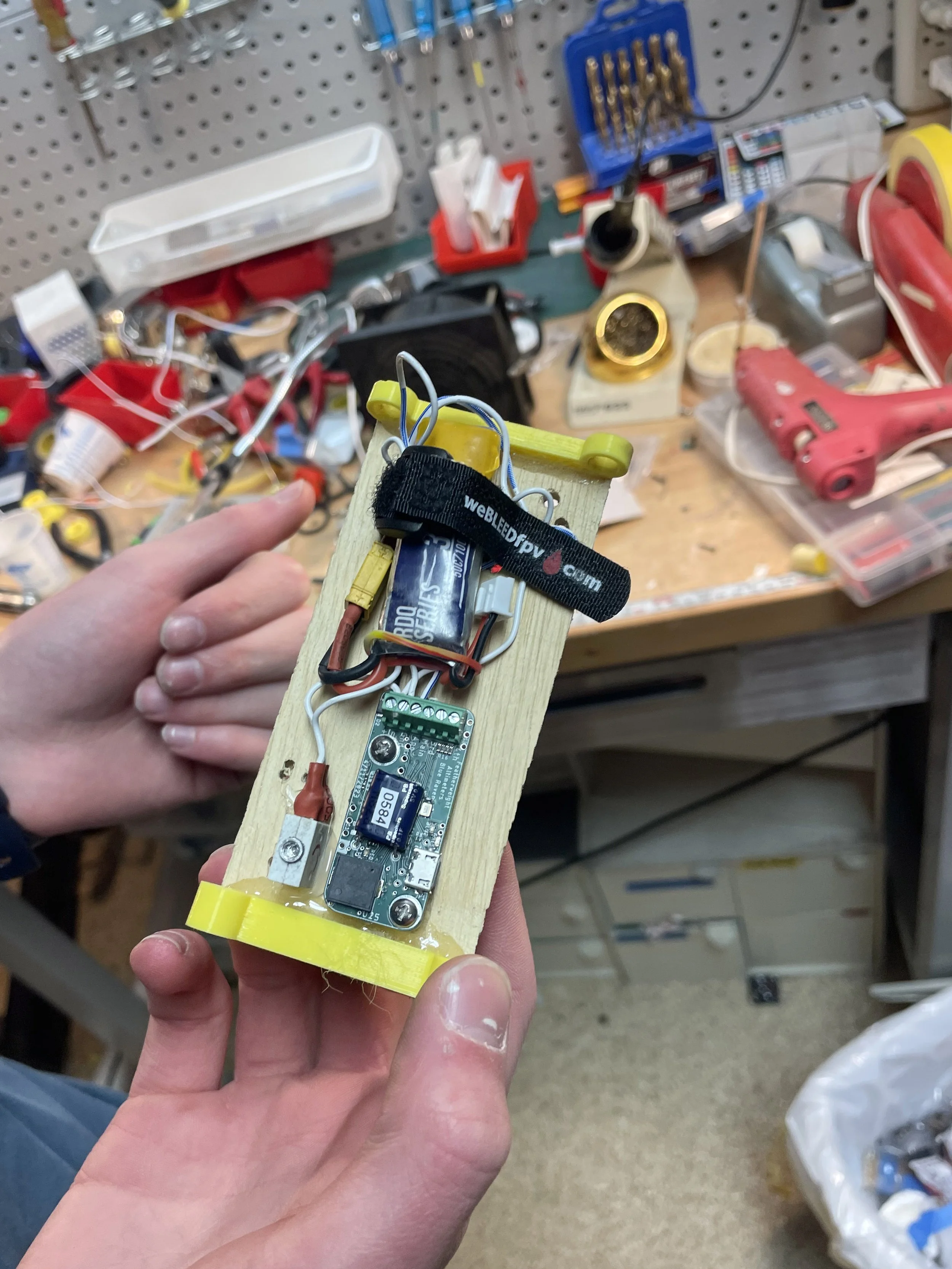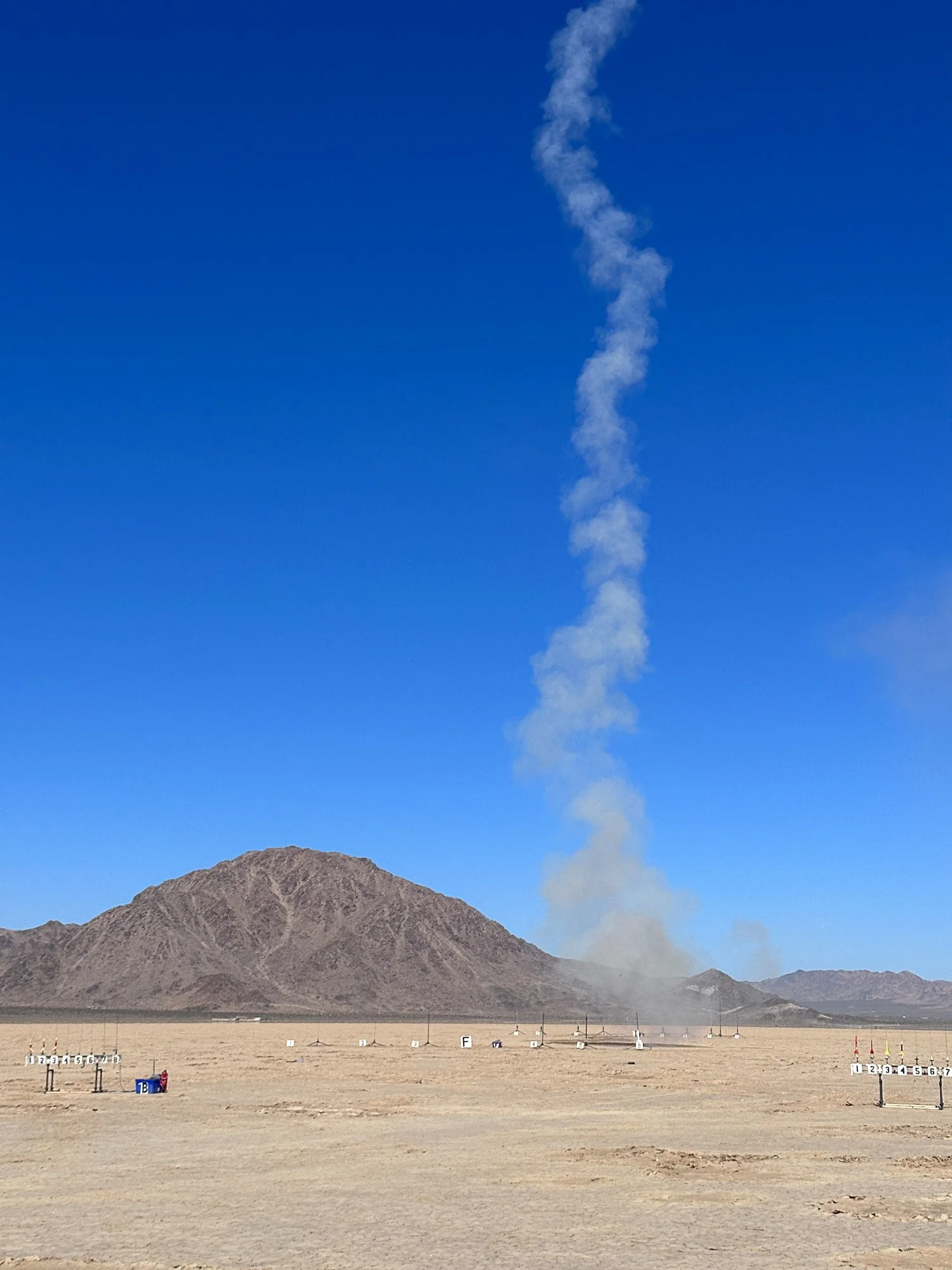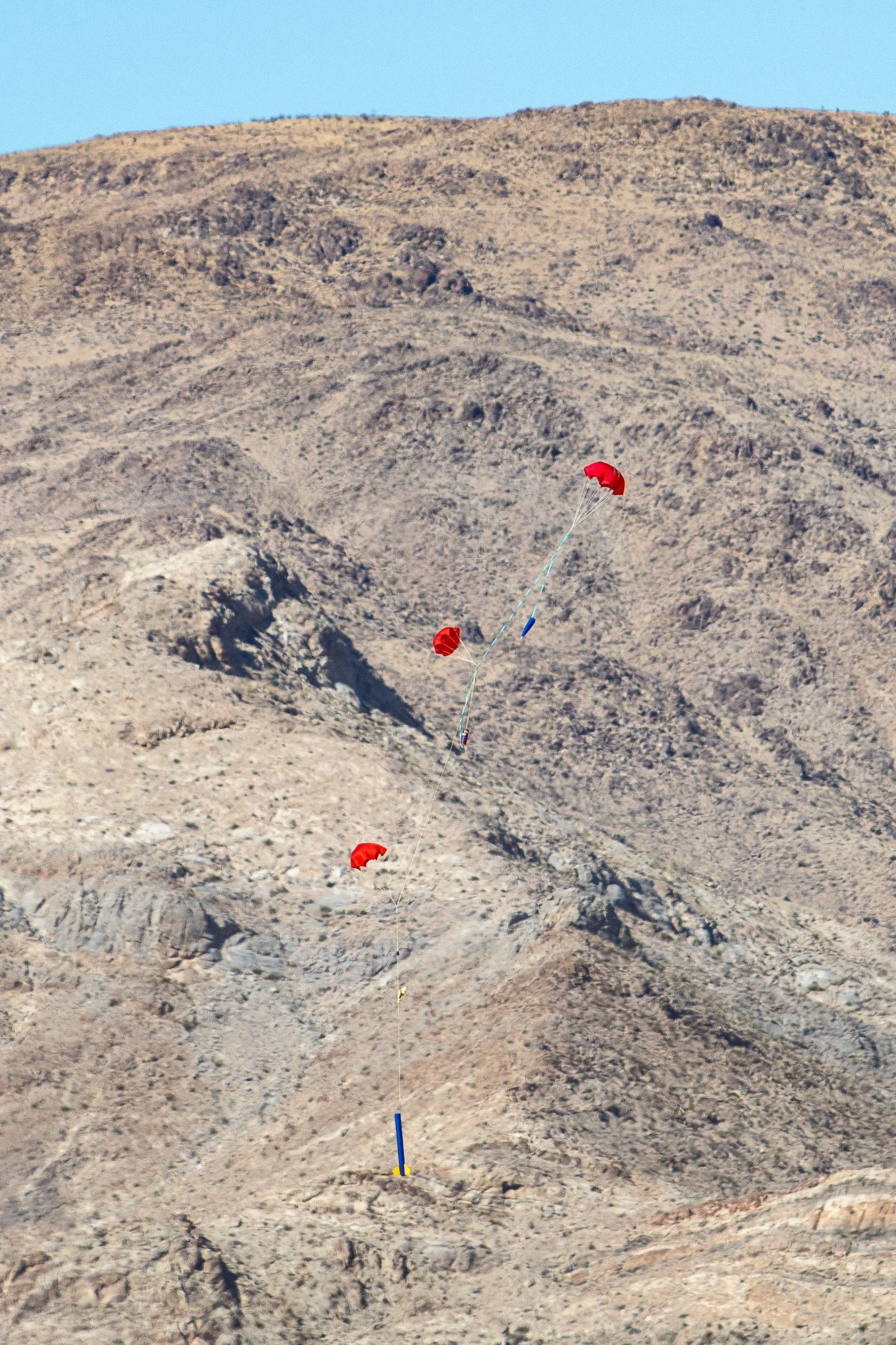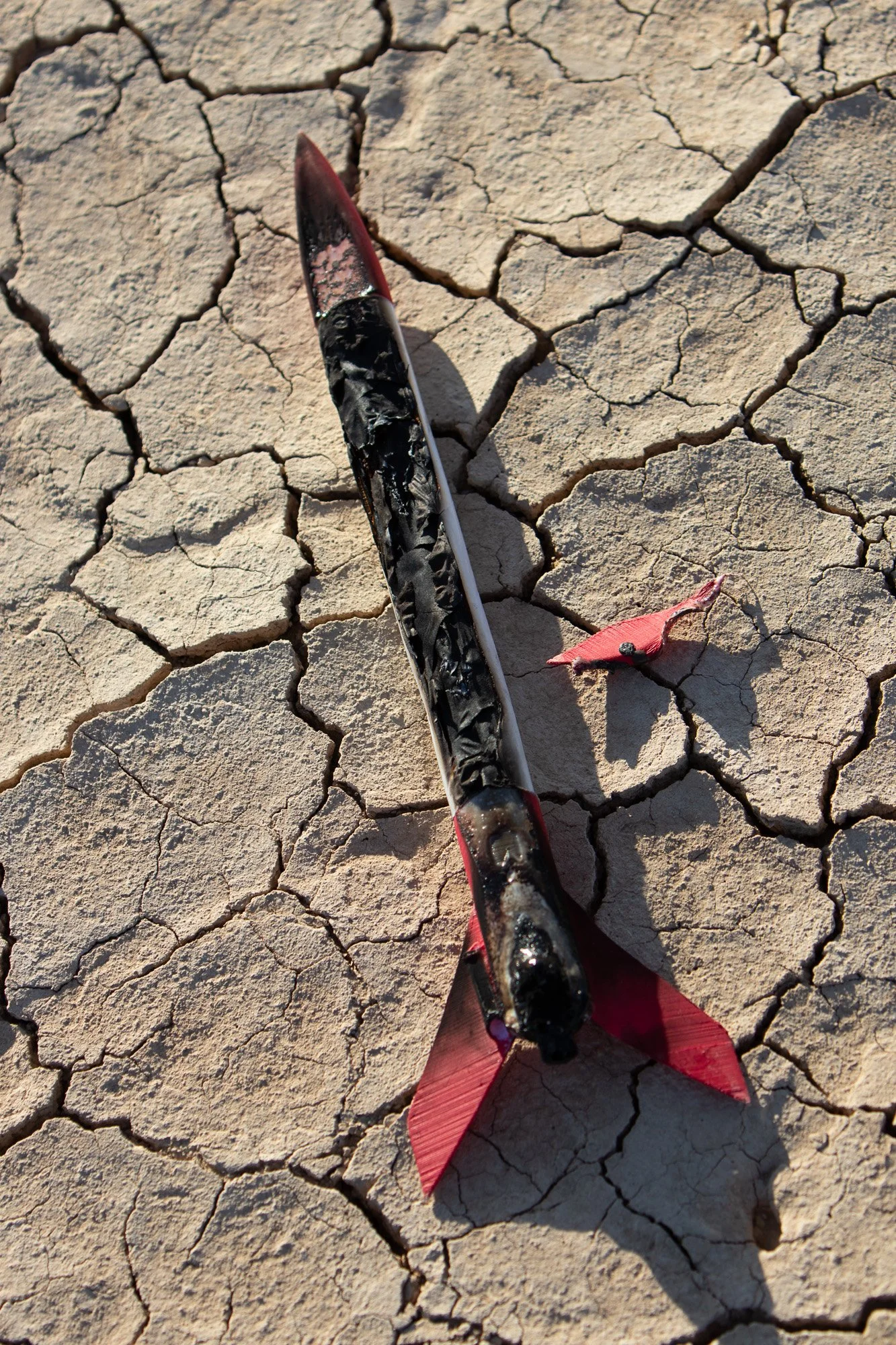
Scroll ↓
High Power Rocketry:
Personal and Research Project
Design, build, and fly high power rockets with the Rocketry Organization of California (ROC) in the Mojave Desert; passed written and practical assessment to earn National Association of Rocketry (NAR) Jr. Level 1 High Power Cert. (highest for age); utilize computer simulation (OpenRocket) and CAD as well as fiberglass composites and 3Dprinting. Self-guided independent study to research, design, and test novel, CO2-based mechanism to deploy parachutes on high-power rockets without black powder. This makes high-altitude flights more accessible to minors/broader audiences. rapid iteration through 6 versions; work collaboratively with the BCIL Fabrication Lab; reduce cost to end user.
Designed, simulated and analyzed the performance in OpenRocket prior to test flight
Successful first test flight
On-site workbench - Installing CO2 and electronics before launch
Working with rocket team from neighboring school
LIFT OFF - Test CO2 recovery
Working with rocket team from neighboring school
Integrated ground test with M2 shear pins
Level 1 certification launch
Project Summary
Project: Prototype and fly a system to electronically deploy parachutes on a high-power rocket using CO2. Conventional methods for dual deployment (the practice of deploying a drogue parachute at apogee and a main chute at a predetermined altitude) utilize restricted black powder or expensive and complicated systems.
Role: Solo project, 12th grade Independent Study with the BCIL
Process: Prototype CO2 delivery mechanism using recycled parts Test and calibrate nichrome wire actuation method ground test integrate into avionics bay ground test integrated system with shear-pins test fly improve to fit inside a 38mm body tube
Solution: Rapidly release CO2 from a canister in a compact, lightweight, and reliable fashion that is compatible with existing flight controllers (does not require a servo output)
Impact: This would allow minors to fly to higher altitudes and utilize dual deployment without needing to handle black power or E-matches.
What has been learned:
Importance of iterative design and testing for reliability.
Optimize recovery systems for integration with existing hardware.
Insights into mechanical design and high-power rocketry.
Project Skills
Skills learned/used: fiberglass construction (composites), CAD (Fusion 360), 3D Printing, painting, soldering, parachute packing
Tools learned/ used: Dremel, 3D printer, soldering iron, basic hand tools
Software:
Autodesk Fusion 360 (CAD design)
OpenRocket (flight simulation and performance analysis)
Project Support
Relevant communities:
Rocketry Organization of California (ROC)
National Association of Rocketry (NAR)
r/Rocketry online community
Relevant certifications:
National Association of Rocketry (NAR) - Jr. Level 1 High Power Rocketry Certification
Relevant Education: UCLA - Samueli School of Engineering and Applied Sciences, Los Angeles, CA July 2023
Engineering Design in Aerospace Engineering - Rockets (E96)
Designed, built, and launched rockets with UCLA Rocket Project Team Members.
Volunteer:
ROC general volunteer. assist with launch pads, tables, and ignition leads before and after ROC launch days and events. Lucerne Dry Lake, Mojave Desert, CA
Over 11 years of designing, building, and launching prior to current projects
Lucerne Dry Lake, Mojave, CA 34.495, -116.96
I enjoy going on-site for multi-day launch events.
I’ve enjoyed building different rockets for over 11 years. Each one has taught me something whether that be new construction materials, propellant compositions, computer simulations, fin shapes, or parachute deployment mechanisms.





































